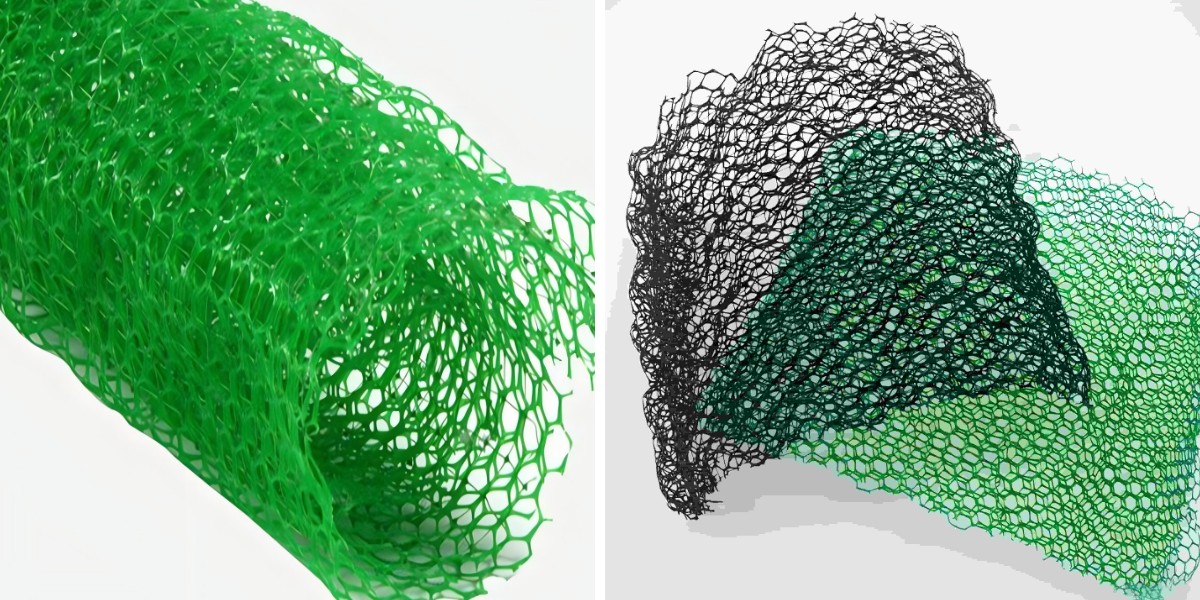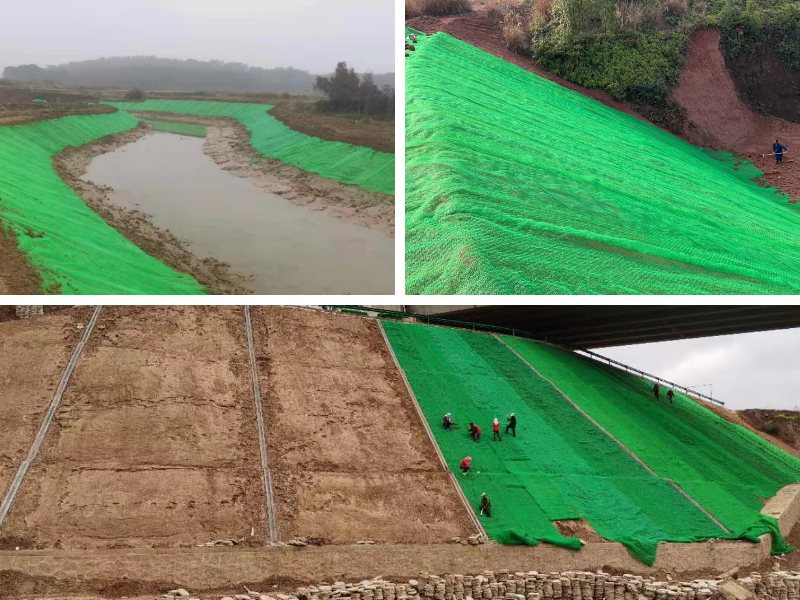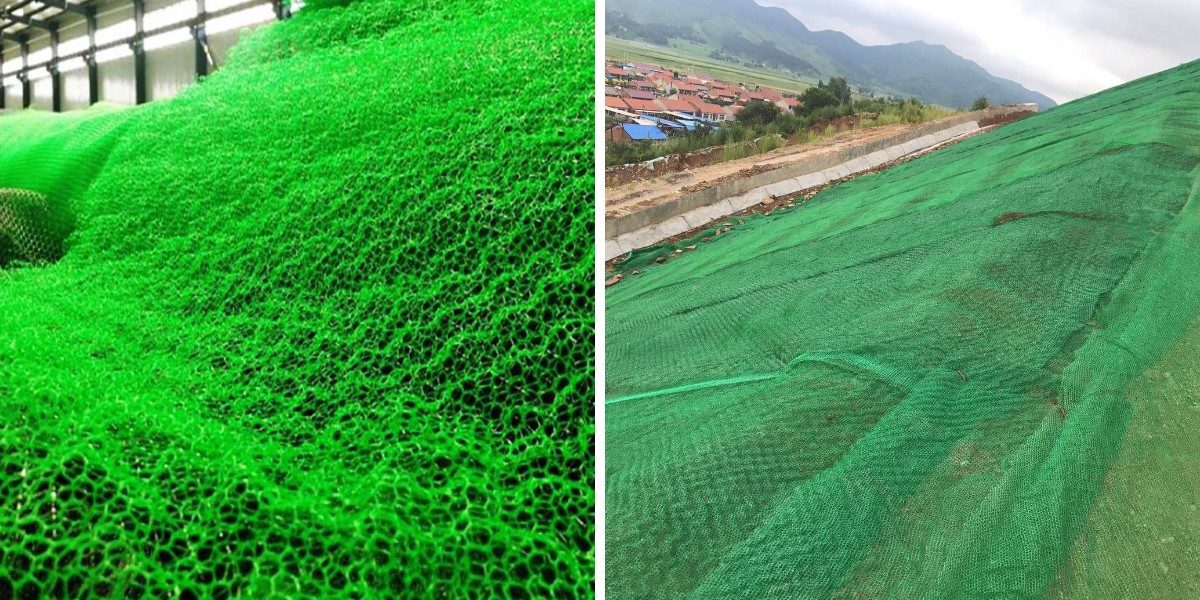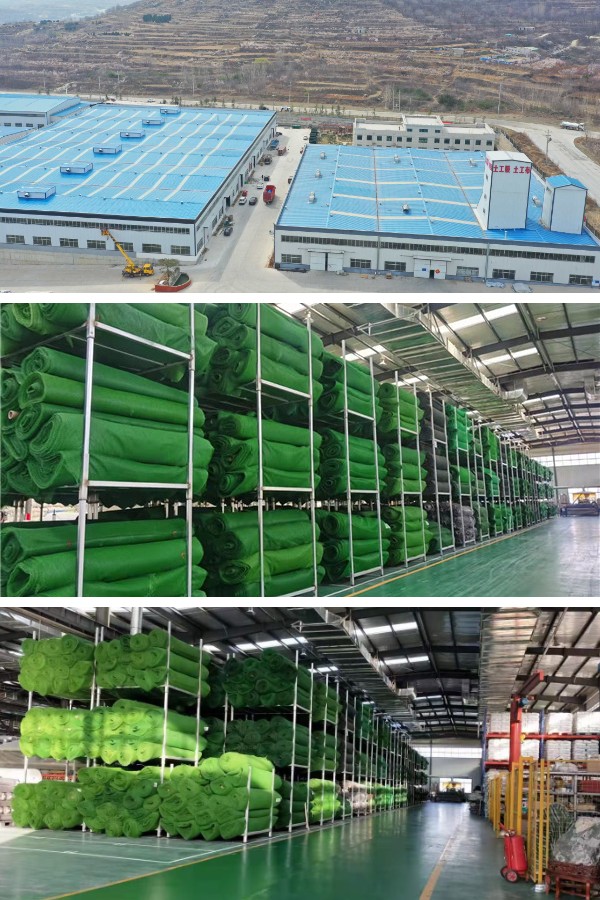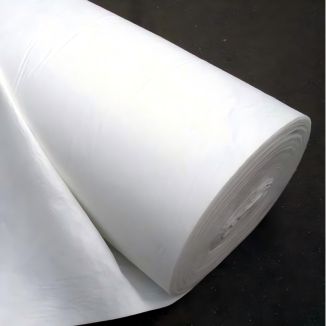Biodegradable vs. Non-Biodegradable Nets: Specification, Application, and Sustainability
Erosion manipulate and vegetation institution count number closely on specialised netting solutions, with two most important classes dominating the market: biodegradable and non-biodegradable nets. Each gives awesome advantages, tailor-made to task timelines, environmental goals, and overall performance needs. For experts in landscaping, construction, or ecological restoration, grasp the variations in 3D Vegetation Net Specifications, Dimensions of 3D Vegetation Net, and alignment with bio-engineered erosion manage concepts is critical. This information compares biodegradable and non-biodegradable nets, exploring their specifications, real-world applications, and sustainability profiles. By the end, you’ll be outfitted to select the netting that balances functionality, cost, and environmental responsibility.
Understanding the Core Difference: Biodegradable vs. Non-Biodegradable Nets
The necessary big difference lies in their lifecycle: biodegradable nets destroy down naturally over time, whilst non-biodegradable nets stay intact indefinitely (or for decades). Biodegradable choices are generally made from plant-based fibers like coir, jute, or hemp, designed to decompose after pleasurable their transient role. Non-biodegradable nets, by means of contrast, are synthetic—crafted from polymers like polypropylene (PP) or polyethylene (PE)—offering long-term structural persistence. Both fall underneath the umbrella of bio-engineered erosion manipulate however serve special task objectives: biodegradable nets prioritize ecological integration, whilst non-biodegradable nets focal point on everlasting stabilization.
3D Vegetation Net Specifications: Biodegradable vs. Non-Biodegradable
3D Vegetation Net Specifications dictate performance, and the two internet sorts diverge considerably in cloth composition, durability, and degradation traits:
Biodegradable Net Specifications
Biodegradable nets are engineered for managed decomposition, with specs tailor-made to assignment timelines:
Material: Coir (coconut fiber) is the most common, presenting sluggish degradation (3–5 years) and herbal toughness. Jute nets decompose quicker (6–12 months), best for temporary projects. Hemp or flax variations stability power and mid-range degradation (1–2 years).
Tensile Strength: Moderate however enough for brief erosion control—coir nets, for example, stand up to mild to average soil motion till vegetation establishes.
Porosity: High porosity lets in water, air, and vitamins to penetrate, assisting seed germination and root growth—a key alignment with bio-engineered erosion control’s focal point on herbal ecosystem regeneration.
Non-Biodegradable Net Specifications
Non-biodegradable nets prioritize long-term structural integrity, with specs optimized for permanence:
Material: PP or PE, chosen for excessive tensile power and resistance to UV radiation, chemicals, and organic degradation. Some editions encompass UV stabilizers to lengthen lifespan in harsh out of doors conditions.
Tensile Strength: Significantly greater than biodegradable nets, succesful of withstanding heavy soil movement, steep slopes, and extended publicity to environmental stress.
Mesh Structure: Woven or extruded 3D mesh with uniform mobilephone sizes, designed to lure soil particles whilst permitting vegetation to develop through—creating a everlasting “root-n net” system.
Dimensions of 3D Vegetation Net: Sizing for Project Needs
Dimensions of 3D Vegetation Net—including length, width, phone size, and thickness—vary through kind however are constantly project-specific:
Biodegradable Net Dimensions
Biodegradable nets are commonly reachable in rolls 2–4 meters vast and 50–100 meters long, with telephone sizes ranging from 10x10mm to 20x20mm. Thickness relies upon on material: coir nets are thicker (2–4mm) for durability, whilst jute nets are thinner (1–2mm) for flexibility. These Dimensions of 3D Vegetation Net swimsuit small to medium slopes and transient projects, as they’re convenient to manage and installation besides heavy equipment.
Non-Biodegradable Net Dimensions
Non-biodegradable nets come in large Dimensions of 3D Vegetation Net to cowl enormous areas: rolls up to 5 meters extensive and 100–200 meters long. Cell sizes are large (15x15mm to 30x30mm) to accommodate strong vegetation growth, and thickness degrees from 3–6mm for more suitable strength. These dimensions are perfect for large-scale initiatives like toll road embankments or steep slopes the place everlasting stabilization is required.
Applications: Where Each Net Type Excels
Both internet kinds serve bio-engineered erosion manage however are appropriate to wonderful scenarios:
Biodegradable Net Applications
Biodegradable nets shine in temporary, eco-sensitive projects:
Ecological Restoration: Used in wetland recovery, reforestation, or native plant establishment, the place long-term artificial presence would disrupt ecosystems. Coir nets, with gradual degradation, aid vegetation till it’s self-sustaining.Short-Term Construction Sites: Jute nets manage erosion for the duration of constructing projects, decomposing as soon as development ends and landscaping is complete—eliminating waste elimination costs.Agricultural Slopes: Protect farmland from soil erosion whilst permitting plants to grow, decomposing into natural count number that enriches the soil.
Non-Biodegradable Net Applications
Non-biodegradable nets are reserved for permanent, high-stress applications:
Highway and Railway Embankments: Stabilize steep slopes inclined to landslides, presenting long-term erosion manipulate as vegetation matures into a everlasting root system.Industrial Sites: Used in mining reclamation or landfill covers, the place chemical resistance and sturdiness are fundamental to incorporate contaminants.Coastal Erosion Control: Protect seashores from wave motion and tidal forces, as their UV and saltwater resistance ensures a long time of performance.
Sustainability: A Critical Comparison
Sustainability is the defining thing in deciding on between the two internet types, with every imparting wonderful environmental impacts:
Biodegradable Nets: Eco-Friendly Advantages
Biodegradable nets align with round economic system principles:
Renewable Materials: Made from plant fibers that are grown and harvested sustainably, lowering reliance on petroleum-based synthetics.Zero Waste: Decompose into natural matter, leaving no microplastics or poisonous residues—eliminating post-project waste disposal.Soil Health: Degradation provides vitamins to the soil, enhancing fertility and helping long-term ecosystem health.
Non-Biodegradable Nets: Sustainability Trade-Offs
Non-biodegradable nets have environmental drawbacks however provide sustainability advantages in particular cases:
Longevity Reduces Replacement: Their lengthy lifespan potential fewer nets are produced and transported over time, reducing carbon emissions from manufacturing.Recycled Options: Some non-biodegradable nets use recycled PP/PE, decreasing plastic waste in landfills. However, they nevertheless persist in the surroundings if no longer excellent managed.Targeted Use Cases: In crucial infrastructure (e.g., flood protection), their permanence prevents repeated erosion activities that ought to damage ecosystems.
Choosing the Right Net: A Decision Framework
Use these standards to pick the exceptional internet for your project:
Project Lifespan: Temporary (≤3 years) → Biodegradable; Permanent (≥10 years) → Non-biodegradable.Environmental Sensitivity: Eco-sensitive areas (wetlands, country wide parks) → Biodegradable; Industrial or infrastructure web sites → Non-biodegradable.Slope and Stress: Gentle slopes, mild erosion → Biodegradable; Steep slopes, heavy stress → Non-biodegradable.Sustainability Goals: Zero-waste, round financial system → Biodegradable; Long-term sturdiness with minimal substitute → Non-biodegradable.
Conclusion: Balancing Performance and Sustainability
Biodegradable and non-biodegradable nets every play imperative roles in bio-engineered erosion control, with their fee decided by way of assignment needs. Biodegradable nets provide eco-friendly, brief solutions, with 3D Vegetation Net Specifications and Dimensions of 3D Vegetation Net tailor-made to managed decomposition and soil health. Non-biodegradable nets furnish everlasting stabilization, excelling in high-stress, long-term applications.
The key to success lies in matching the internet kind to your project’s timeline, environmental context, and sustainability goals. For most eco-sensitive or temporary projects, biodegradable nets are the accountable choice; for quintessential infrastructure requiring permanence, non-biodegradable nets supply reliability. By grasp their specifications, applications, and environmental impacts, you can pick a netting answer that protects landscapes successfully whilst upholding your dedication to sustainability.
Contact Us
Company Name: Shandong Chuangwei New Materials Co., LTD
Contact Person :Jaden Sylvan
Contact Number :+86 19305485668
WhatsApp:+86 19305485668
Enterprise Email: cggeosynthetics@gmail.com
Enterprise Address: Entrepreneurship Park, Dayue District, Tai 'an City,
Shandong Province


